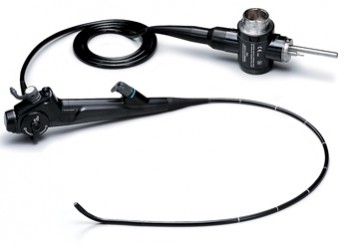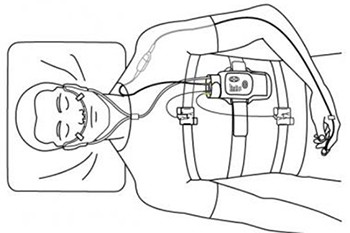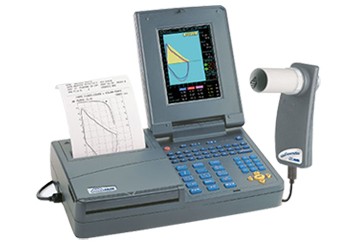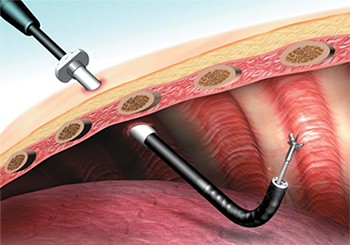This test involves measuring the partial pressure difference between inspired and expired carbon monoxide. It relies on the strong affinity and large absorption capacity of erythrocytes for carbon monoxide and thus demonstrates gas uptake by the capillaries that are less dependent on cardiac output. The measurement of DLCO is affected by atmospheric pressure and/or altitude and correction factors can be calculated using the method recommended by the American Thoracic Society. Expected DLCO is also affected by the amount of hemoglobin, carboxyhemoglobin, age and sex. The correction for hemoglobin is based on the method of Cotes as recommended by the American Thoracic Society. Online resources exist to facilitate these corrections for altitude, hemoglobin, and carboxyhemoglobin.
Factors affecting DLCO
Decrease
DLCO is decreased in any condition which affects the effective alveolar surface area:
- Hindrance in the alveolar wall. e.g. fibrosis, alveolitis, vasculitis.
- Decrease of total lung volume, e.g. Restrictive lung disease.
- Chronic obstructive pulmonary disease (COPD), due to large residual air stuck in the lungs.
- Uneven spread of air in lungs, e.g. emphysema.
- Pulmonary embolism.
- Cardiac insufficiency.
- Pulmonary hypertension.
- Chronic heart failure.
- Anemia-due to decrease in blood volume.
However, many modern devices compensates for the hemoglobin value of the patient (taken by blood test), and excludes it as a factor in the DLCO interpretation.
Increase
Factors that can increase the DLCO include polycythaemia, asthma (can also have normal DLCO) and increased pulmonary blood volume as occurs in exercise. Other factors are left to right intracardiac shunting, and alveolar hemorrhage.
Factors affected by DLCO
Decrease
A DLCO of less than 60% predicted portends a poor prognosis for lung cancer resection. FEV1 is of lesser prognostic value for lung resection survival.




